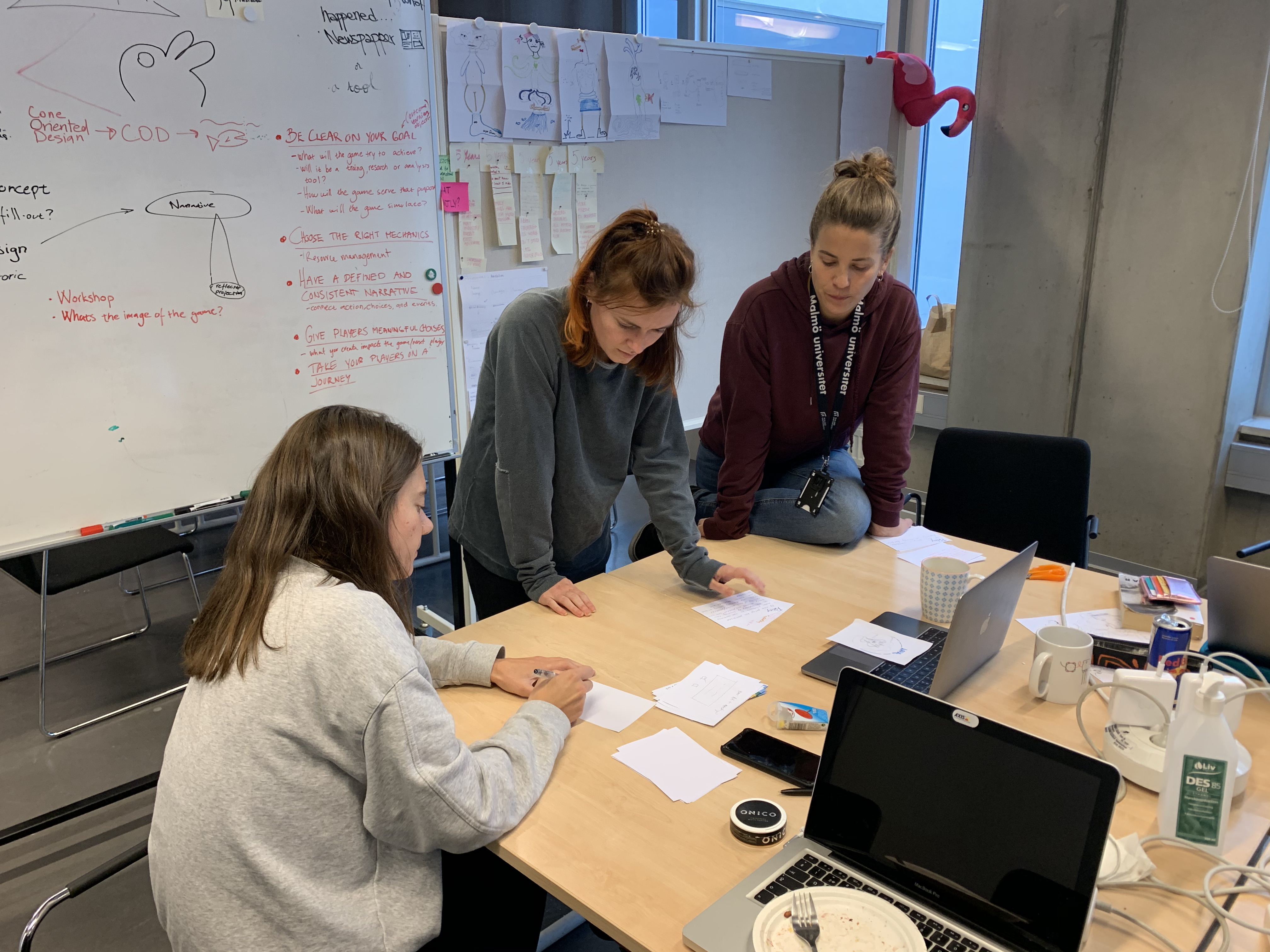The Parliament of Species
The Parliament of Species is a policy-making tool that enables the co-creation of an archive of citizen's policies based on projections about the future of AMR.
Duration
2 months
Year
2020
Team
Alexandra Veskoukis,
Leyla Allendes,
Love Lagerkvist,
Marsali Miller,
Veronica Giraldo
Context
Design and Social Innovation course, Malmö university
Tags
Academic Research Interaction design UX Design Prototyping Workshops & Participatory Design More than Human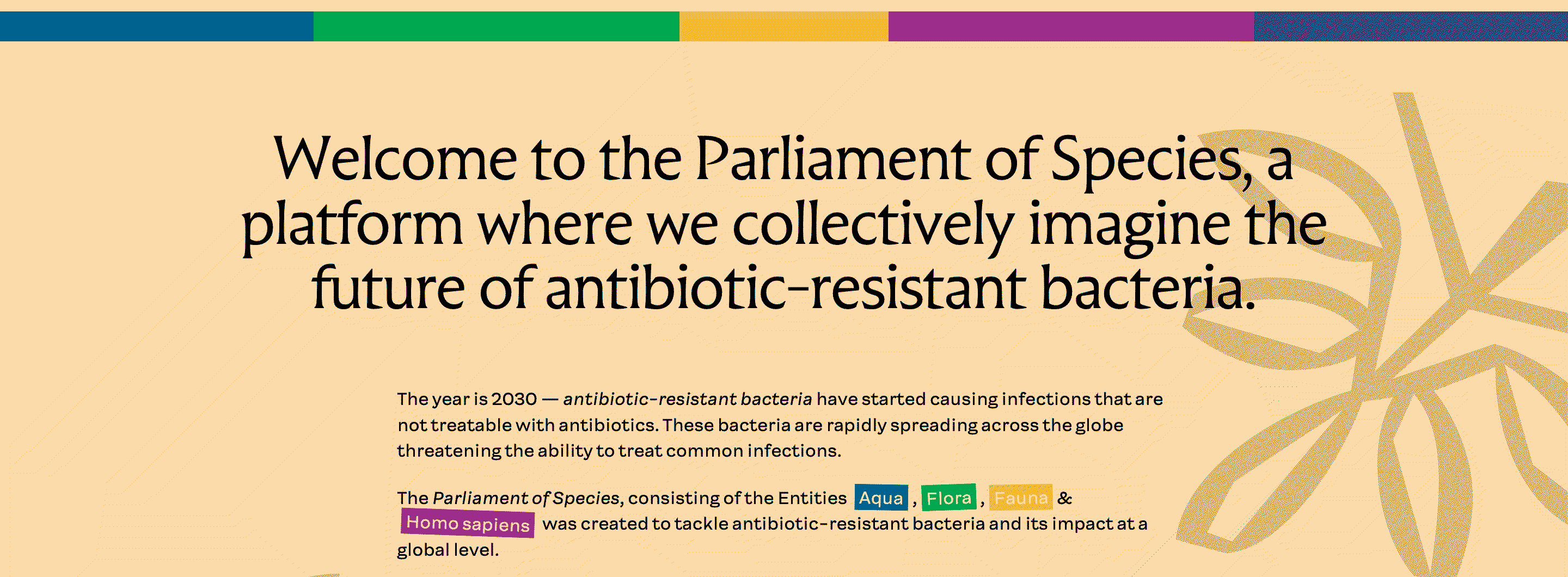
A website for enabling citizens to co-create policies that relate with the expansion of antimicrobial resistance while embodiying non humans to advocate for them.
The parliament of species is a platform designed as a result of a collaboration with several stakeholders being specialists in Antibiotic Resistance.
Antimicrobial resistance (AMR) is a global issue that threatens the effective prevention and treatment of infections cause by bacteria, parasites, viruses and fungi. (World Health Organisation)
Stakeholders
- Researcher specialized in AMR, Malmö University
- The Research Institute of Sweden (RISE)
- The Public Healthy Agency of Sweden
- Strama
Tools & Methods
- Figma
- Digital workshops on Miro
- Play-testing
- User scenario
- Role-playing
Final prototype
The dynamic version of the website is not available anymore, so here is a basic prototype made out of the screenshots we had. You can find in the archive of policies created by the articipants representing various species: flora, fauna, homo sapiens, and aqua.
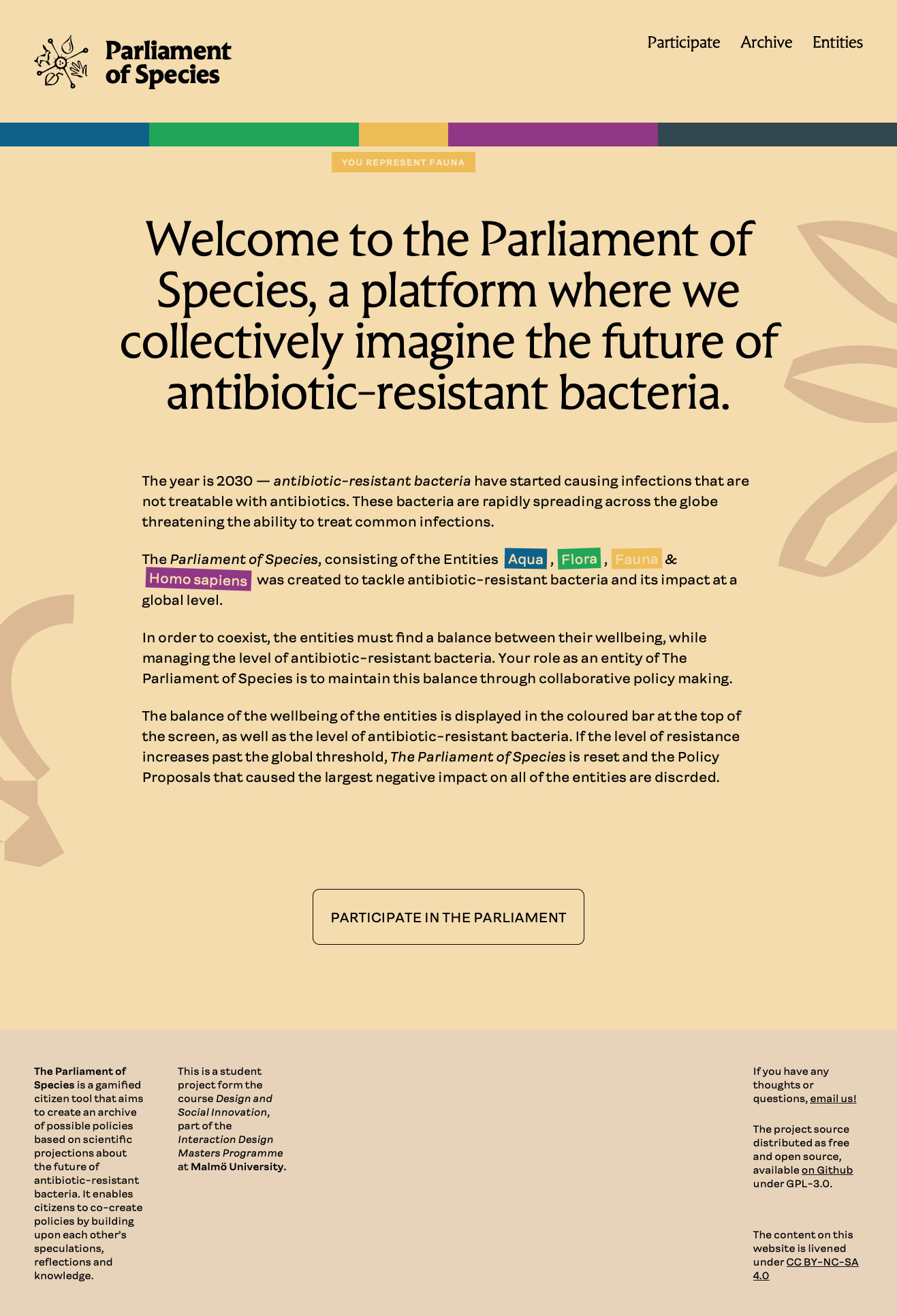
Front page of the website.
The balance, visualized through a bar
graph on the top of each page, used to update in
real time the impacts of the policies proposed by the citizens. The impacts of the policies proposals are assessed by other citizens who represent the interests of different species in order to evaluate the proposals from a non-human-centered perspective.
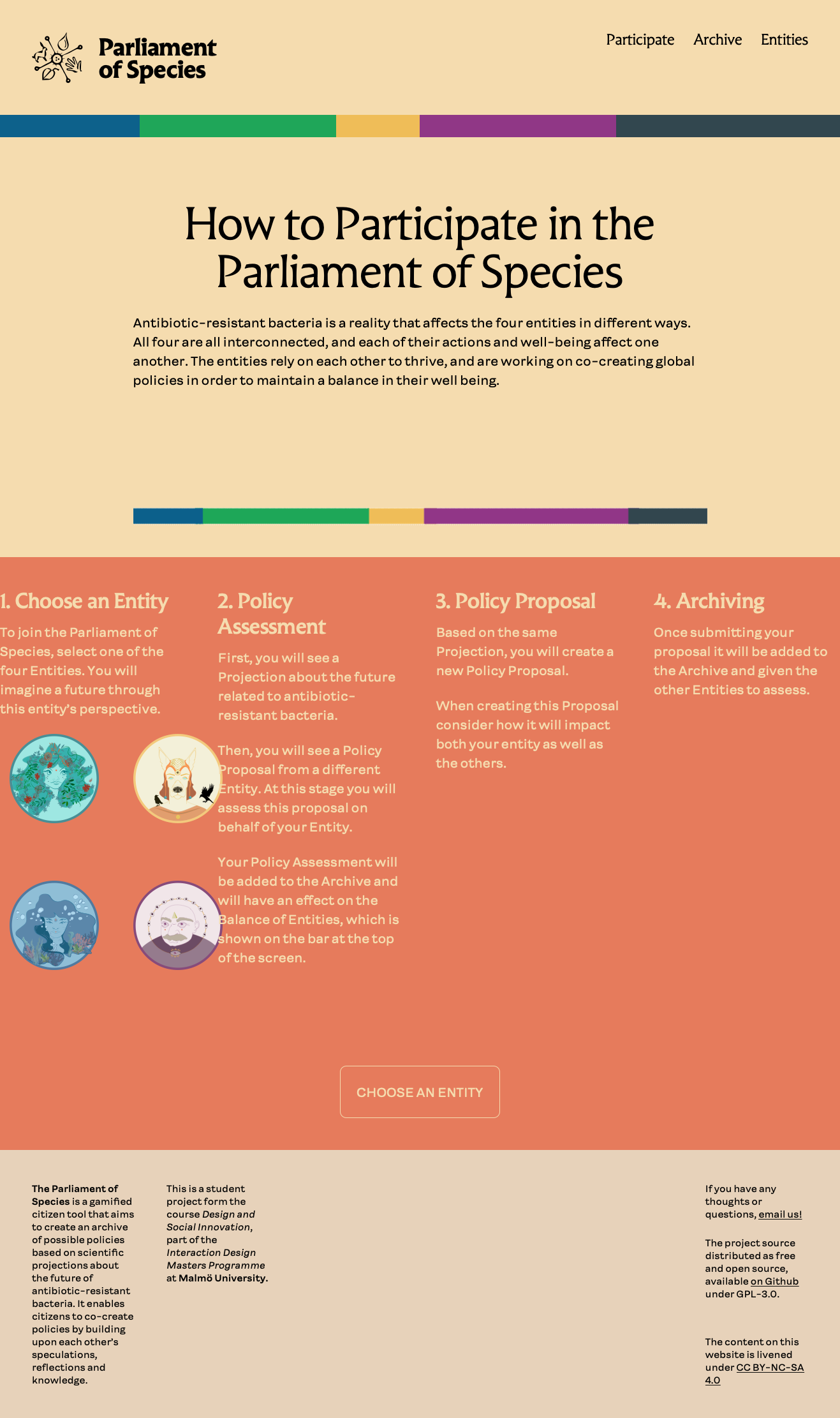
Instruction page of the website.
Background
Beyond the human gaze
We focused on the impacts of AMR beyond the interests of humankind’s wellbeing/survival. We identified during our theoretical research that humans would be far from the only ones to suffer from the development of antibiotic resistance, while they (we) are the ones contributing greatly to the spread of resistant bacteria.
Our goal was to promote and engage other humans on the topic of AMR, while fostering matters for other species’ wellbeing. This shift of view point on the topic is also a way to see this anxiogenious future as a potential for humans to give more space and agency to other species’ interests.
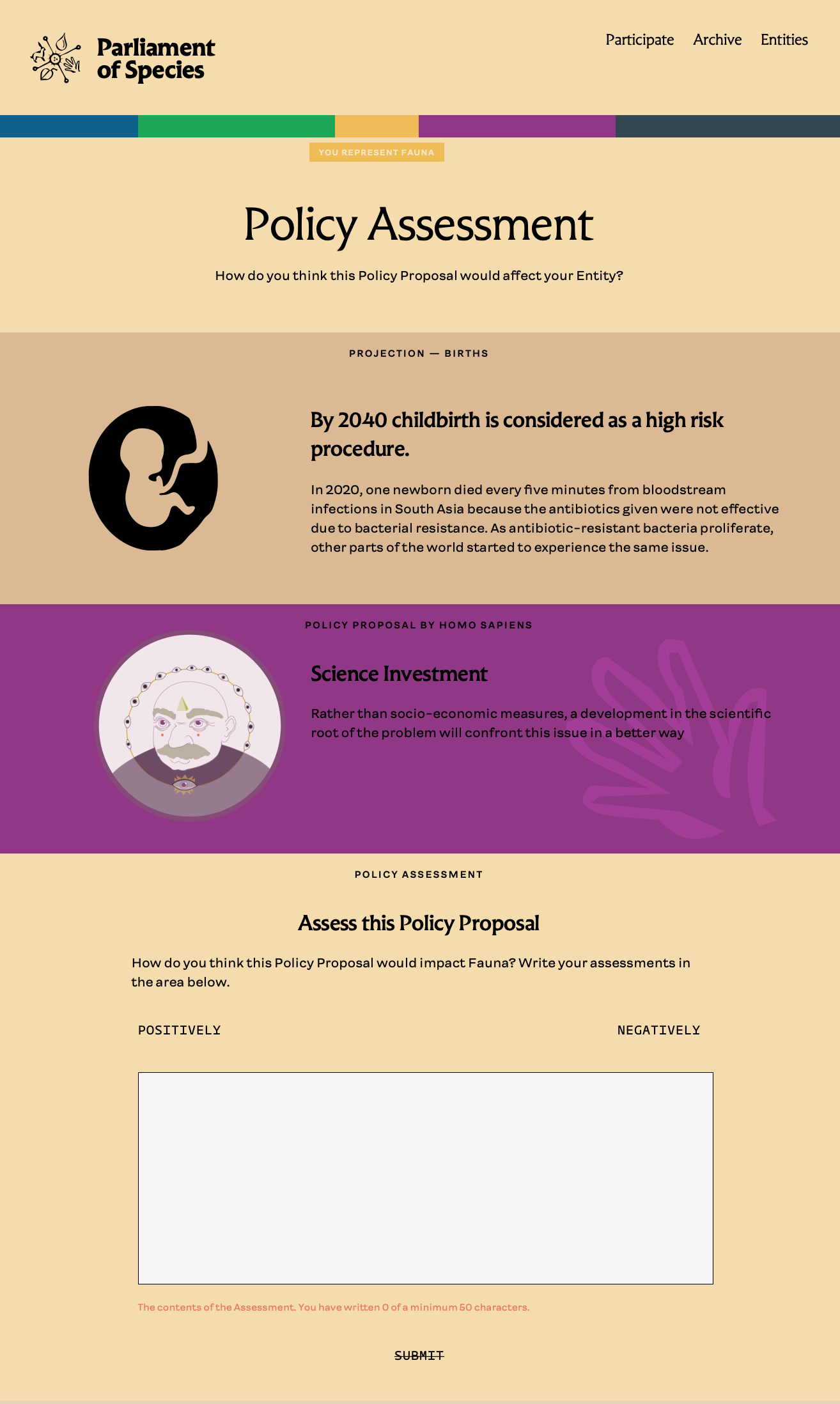
On this page, a citizen who chose to represent the entity 'Fauna' has the task to assess a policy previously proposed by another participant who was representing the interests of 'Homo Sapiens'. On the next page, the task will be to propose another policy, representing better the interests of fauna and other species.
Engaging humans into the critical thinking of policies
The website (now offline) used to propose an alternative democratic structure of policymaking. The goal of the website is to engage citizens in imagining the future of AMR by co-creating future policies. These policies were collected on the digital platform, as an archive of different citizen perspectives, values, and knowledge regarding AMR and the future.
The policy-making process was conceived at various steps of the project with participants from various background (mainly young international people living in Sweden). We also relied on our stakeholder’s knowledge on the topic to frame the pedagogical aspects of the website by conducting interviews and digital workshops with them. From this collaboration we could present on the website six initial ‘projections’, which are potential future situations that will be encountered in the future because of the development of AMR.

Screenshot of the digital workshop's interface conducted on Miro with our Stakeholders from the Swedish public health agency, RISE, Strama and Malmö University.
This project especially aimed to challenge power-relations underlying expertise and therefore the capacity of citizens to feel confident about their knowledge for expressing their opinion on a complex topic. We also aimed to place non-humans as citizens in this project, by giving them the status of stakeholders in our project, but also by researching ways of making non-humans heard in a policy-making process driven by citizens.
More theoretical details can be found in this paper we wrote for the NORDES21 conference.
Gallery of the process
Physical prototyping of a game and play-testing

The platform was initially thought as a game. This a a first prototype of a board on which we play-tested different versions of the policy-making experience. The challenge was to get the players to get enough understanding of AMR, without giving too much information at once. The game was collaborative, this is when the idea came that the resistant bacteria would be an independant enemy that the players would have to fight against by collaborating together.

The general idea for the collaboration of citizens is inspired from the game exquisite corpses, which we tested as a very lo-fi version of our platform. With one projection into the future citizens can propose various policies, while being inspired by each others.
Design of a paper version of the platform and test with participants

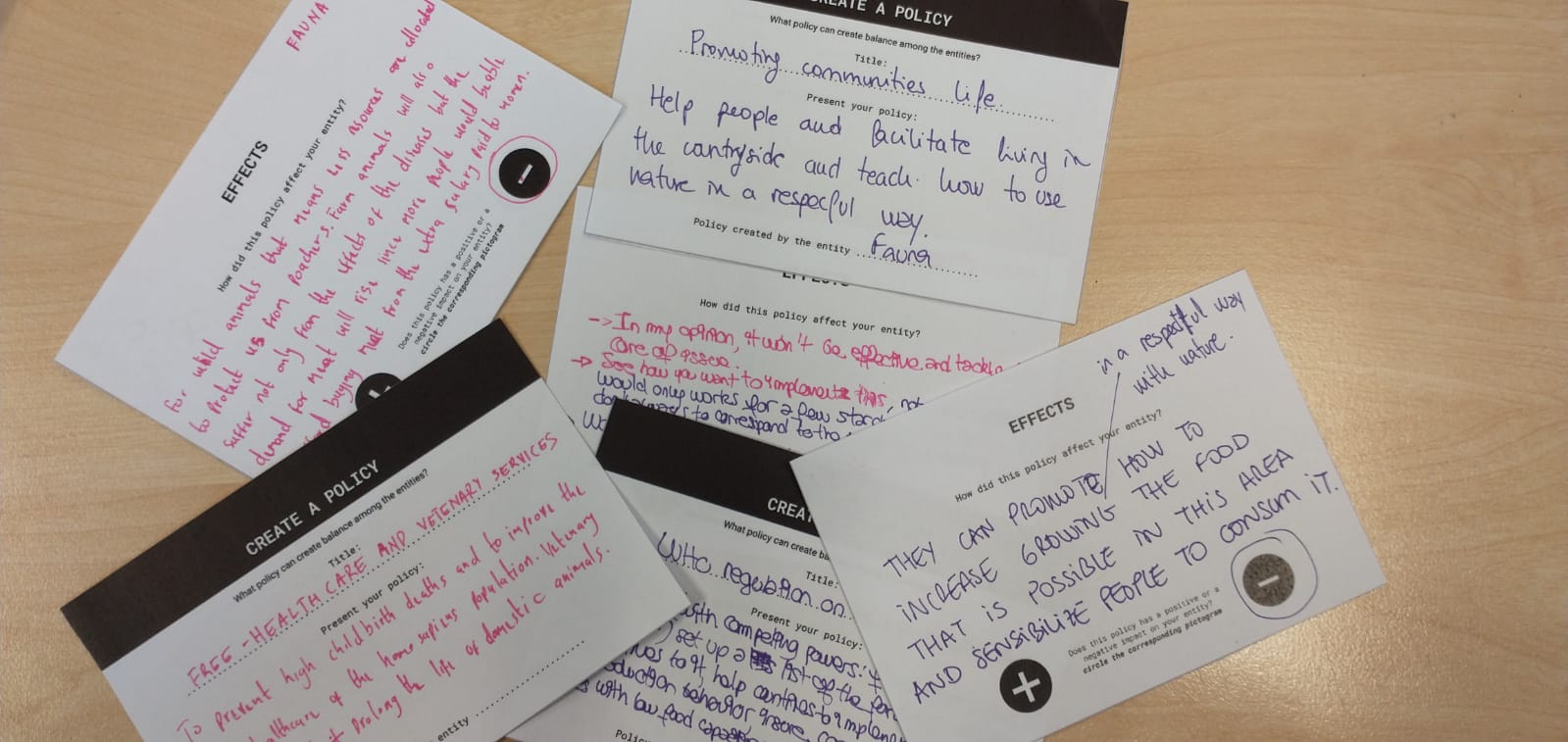
We designed a physical version of the policy-making system, by printing cards representing the different information that we were presenting one by one to the participants. We proposed templates that were filled by participants, which became then part of our library and could serve as inspiration to others. This physical enaction of the policy-making platform was very helpful because it enabled us to determine important parameters such as rhythm, information given, number of tasks required, duration of the contribution, help required…
